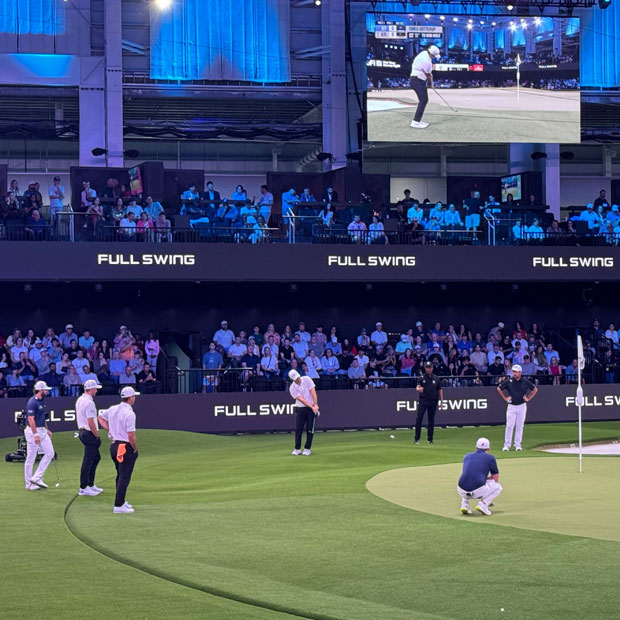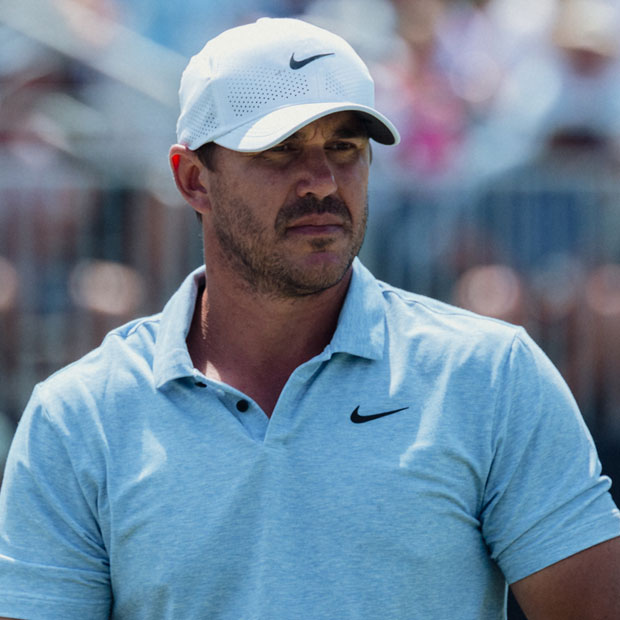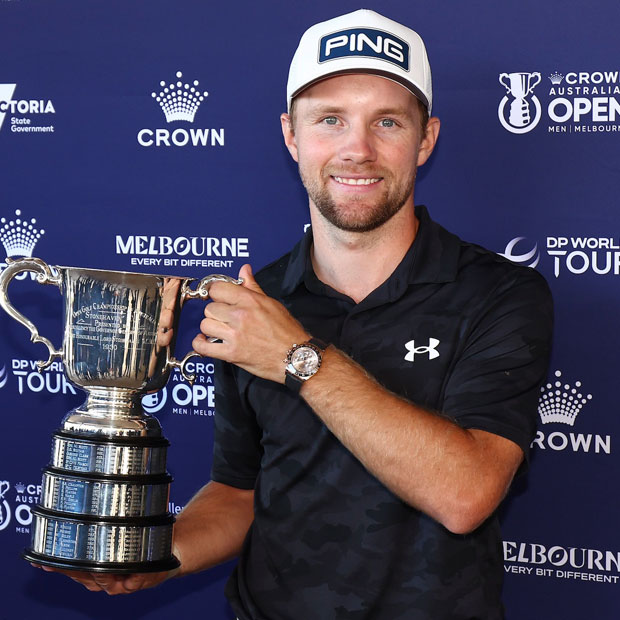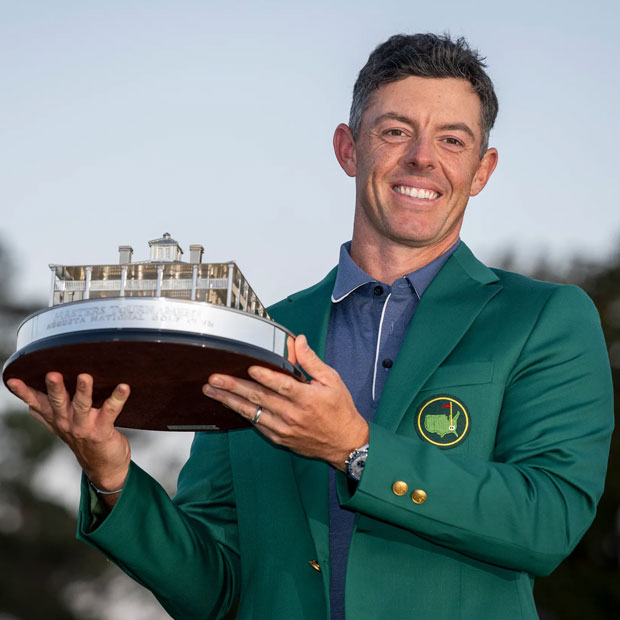Rory McIlroy Is the Modern Model of Consistency and Longevity
Defining Rory by his major misses means ignores a wildly impressive run at the top of the game


In 2007, 18-year-old amateur Rory McIlroy made his major championship debut at Carnoustie. He opened with a 68 (-3) to grab a share of third place. The players who were tied for third or better after the opening round were Michael Campbell (Current age: 55), Boo Weekley (50), Angel Cabrera (54), Markus Brier (56), Paul McGinley (57), and Sergio Garcia (44).
Over the ensuing 17 years to the present day, Rory McIlroy (35) has experienced the gamut. He’s conquered four major championships, been on the winning and losing sides of seven Ryder Cups, held major championships within the palm of his hands only to let them slip from his grasp, and dealt with both a decade-long major drought and the questions that loom over a superstar who has failed to accomplish golf’s most prized task for ten straight years.
But to truly understand the unique brilliance of McIlroy’s career, a nearly two-decade span in which McIlroy has rarely not been one of the top five players in the world, one must appreciate the normal career arc of the modern golfer. The game has never been deeper, speedier, and more technology-driven, trends that typically shorten careers, not extend them. Equipment manufacturers boast of driver heads that allow players to hit the ball anywhere on the face, an unfortunate development for top talents like McIlroy who routinely find the center of the club face. Playing to an elite level at an early age is extremely challenging; maintaining that skill level for two decades against increasingly athletic and optimized golfers is even harder. And yet that’s exactly what Rory McIlroy has done.
Throughout the entirety of his career, McIlroy has defied the natural downturns that have claimed so many of his peers. He has been the unrivaled model of consistency and longevity. A testament to both McIlroy’s prodigious talent at a young age and his ability to sustain his play, Rory has witnessed both the rises and falls of a new generation of talent, many of whose competitive careers will likely start after McIlroy’s career began and finish before Rory McIlroy has had his final word.
Arguably McIlroy’s fiercest rival in terms of week-in, week-out dominance throughout the 2010s, Dustin Johnson made his major championship debut in 2008 at age 23. Since then, he’s been a strong, consistent force in professional golf, racking up nearly 30 wins worldwide, including two major championship titles and five runner-up finishes in majors. Between 2009 and 2023, DJ registered at least one top ten in a major per year in each calendar year except for 2017, the year in which he infamously missed the Masters due to an injury sustained in his Augusta rental home. But since winning the 2020 Masters, Dustin has largely been uncompetitive in major championships. Should DJ miss the cut this week at Royal Troon, he’ll have missed three of four cuts in major championships in 2024, inviting questions as to the future of his competitive relevance at 40 years of age. In all likelihood, Dustin Johnson will play the entirety of his competitive career within the window of McIlroy’s.
Another contemporary of McIlroy’s, Jason Day arrived onto the championship golf scene in 2010. Four years into his professional career, Day sat four behind the 54-hole leader at the 2010 PGA Championship, tied for fourth place in just his second major championship start. Though he didn’t get the job done in 2010, the foundation of Day’s career had been laid. His career started heating up in 2011, ultimately peaking in 2015 with one of the most dominant seasons of the modern era, including a win at the 2015 PGA. However, Day’s career has not aged with the grace of McIlroy’s, and he has been quietly uncompetitive in major championships since 2020. A year and a half older than McIlroy, Jason Day will most likely play the entirety of his competitive career within Rory’s, much like Dustin Johnson and scores of others.
Brooks Koepka, the only player to arrive on the scene after McIlroy and eclipse McIlroy’s major championship win total, has a strong claim in conversations regarding the best player of the past 15 years. However, his case is based more on his peak performances than his longevity. To date, his major championship relevance primarily exists within a ten-year window (2014-2023), a significant stretch but one that he’ll need to extend past McIlroy’s playing days to compete with Rory’s longevity, a daunting proposition for a player one year McIlroy’s junior. Koepka, one of the most accomplished major champions of the modern era, may very well play the entirety of his career within McIlroy’s as well.
Then there is the duo of Jordan Spieth and Justin Thomas, two players who announced their respective presences well into the heart of McIlroy’s career, ascended to the top of the world ranks, won major championships, and promised a new era of domination. It’s a promise that hasn’t quite been delivered on in the manner many expected it would. Dating back to the start of 2021, Jordan Spieth and Justin Thomas have seven collective top 10s in 30 major championship starts, fewer top-10 finishes than Rory McIlroy has earned by himself (9) over the same time span. Both Spieth and Thomas, ages 30 and 31 respectively, still have time in their careers to reclaim their spots as world beaters, but it is also well within the range of outcomes that McIlroy’s competitive window will both start before theirs and finish after theirs.
And finally, there are players like Jon Rahm, Bryson DeChambeau, Collin Morikawa, Xander Schauffele, and World No. 1 Scottie Scheffler, players who have been consistent performers in major championships over the past 5-8 years, each of whom has at least one major victory to his name. But to rival McIlroy’s longevity, they’ll need to keep up their form for another 5-10 years, a difficult task in the modern era, especially considering each player turned pro at an older age than McIlroy did.
You may be inclined to believe that a player like Scottie Scheffler will sustain a consistent high level of play every season for the next decade. Each time a budding new talent breaks out onto the golf scene, it’s tempting to think his career will stretch 10, 15, or even 20 years. More often than not, though, the flame burns out sooner than we might anticipate, particularly in the modern era. That’s been true for nearly every megatalent that takes the golf world by storm. Except for Rory McIlroy, of course.
From a longevity perspective, Rory McIlroy occupies territory shared only by the greatest golfers to ever touch the club. Since 2009, Rory McIlroy has finished in at least one top 10 per year in sixteen straight major championship seasons, the only player from 2000 onward to do so besides Tiger Woods.

If McIlroy continues his streak through 2028, he’ll be just the second player to finish in a top 10 in a major in twenty consecutive years dating back to when the PGA Championship converted to stroke play in 1958. The other player is Jack Nicklaus, who finished in at least one top 10 in 24 straight major championship seasons between 1960 and 1983. From the beginning of his career through the present, Rory McIlroy has been the barometer of consistency. Between 2009 (McIlroy’s first major championship season as a professional) and 2014, only Lee Westwood (11) posted as many top 10 finishes as McIlroy (10) did. And in the ten years following that time period, McIlroy has posted more top 10s than any other player by a comfortable margin.

The stain on his résumé, a major championship tally that currently sits at just four, is an important part of the Rory McIlroy story. But reducing his career to one number misrepresents the magnificence of that career. It fails to capture the consistency he has exhibited between the ropes, rivaled only by players of the ilk of Phil Mickelson, Arnold Palmer, Gary Player, Tom Watson, Tiger Woods, and Jack Nicklaus. It fails to capture the extremity of the highs and lows in McIlroy’s triumphs and failures, emotional swings reserved only for golf’s biggest figures. And it fails to capture the gravity imbued to a championship when McIlroy makes his way to the first tee.
When McIlroy’s career ultimately comes to an end, he’ll be remembered for the close calls: the missed short-range putts at Pinehurst, the Cameron Smith chasedown at St. Andrews, and the failure to capitalize on a prime opportunity at Los Angeles Country Club, among others. Some will remember him for his dominant major championship wins in the front half of his career, victories that prompted prognostications that the next Tiger Woods had arrived. And some will remember him foremost as a historic underachiever, a golfer whose immense talent is impossible to reconcile with his major championship win total, at least at its current number.
But perhaps the best way to remember Rory’s career will be by his consistency and longevity. In an era defined by speed, technology advancements, optimization, and shortening careers, Rory’s consistency and longevity exist in a category entirely of his own. Given modern trends, Rory McIlroy shouldn’t be considered in the prime of his career right now. At age 35, McIlroy is the oldest player ranked in the top 10 of the OWGR, a top 10 that currently has an average age of 29. And yet right now McIlroy is playing some of the best and most consistent golf he’s ever played. Father time will come for Rory McIlroy, just like it comes for us all, but Rory shows no signs of losing that battle any time soon.
With this week’s Open Championship and every future major championship McIlroy competes in, Rory has the opportunity to add to his legacy and secure a fifth major championship. His quest for a fifth major title, one that has eluded him for a decade, resides on the forefront of every golf fan’s mind this week, just like it does every time McIlroy tees it up on golf’s biggest stages. What shouldn’t be lost in his quest is that, win or lose, we’re witnessing one of the most impressive and consistent careers in the history of the sport.
For more coverage of the Open Championship, visit the Fried Egg Golf Open Championship hub here.
Leave a comment or start a discussion
Engage in our content with thousands of other Fried Egg Golf Club Members
Engage in our content with thousands of other Fried Egg Golf Members
Get full access to exclusive benefits from Fried Egg Golf
- Member-only content
- Community discussions forums
- Member-only experiences and early access to events











Leave a comment or start a discussion
Lorem ipsum dolor sit amet, consectetur adipiscing elit. Suspendisse varius enim in eros elementum tristique. Duis cursus, mi quis viverra ornare, eros dolor interdum nulla, ut commodo diam libero vitae erat. Aenean faucibus nibh et justo cursus id rutrum lorem imperdiet. Nunc ut sem vitae risus tristique posuere. uis cursus, mi quis viverra ornare, eros dolor interdum nulla, ut commodo diam libero vitae erat. Aenean faucibus nibh et justo cursus id rutrum lorem imperdiet. Nunc ut sem vitae risus tristique posuere.